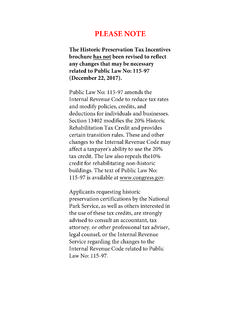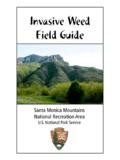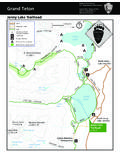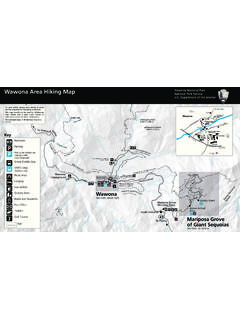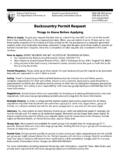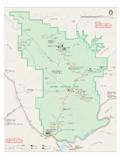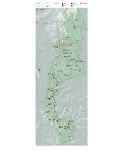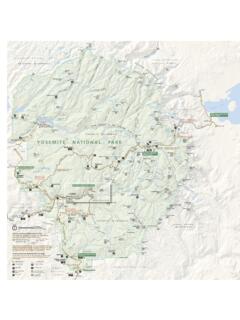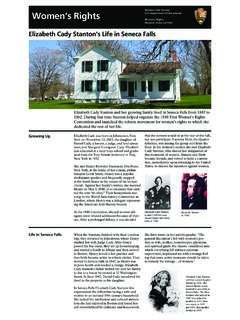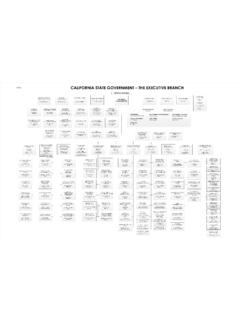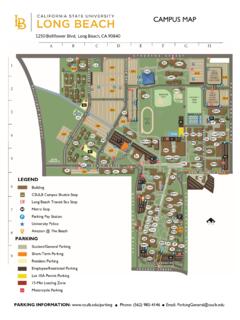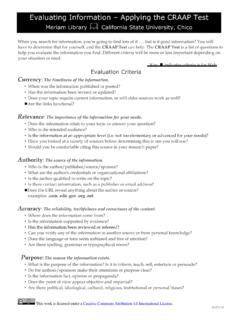Transcription of Foundations of Interpretation - NPS
1 NPS Interpretive Development Program 3/1/07 Professional Standards for Learning and Performance 1 National Park Service Department of the Interior Interpretive Development Program Foundations of InterpretationCurriculum Content Narrative Foundational Competencies for All NPS Interpreters This is the revised and updated curriculum for what was formerly known as Fulfilling the NPS Mission: the Process of Interpretation (Module 101). It builds and evolves from those original ideas and the input of many interpretive professionals who have contributed. This revised curriculum presents the competency descriptions and competency standards for the following NPS core interpretive competencies: Foundations of Interpretation , Knowledge of the Resource, Knowledge of the Audience, and Knowledge of Appropriate Techniques.
2 Authors of this document: Kevin Bacher Interpretive Park Ranger, Mount Rainer National Park Alyssa Baltrus Supervisory Park Ranger, C&O Canal National Historical Park Beth Barrie Curriculum Designer, Eppley Institute for Parks and Public Lands Katie Bliss Curriculum Revision Coordinator, Eppley Institute for Parks and Public Lands Dominic Cardea Chief of Interpretation , Haleakala National Park Linda Chandler Interpretive Park Ranger, Castillo De San Marco National Monument Dave Dahlen Superintendent, Mather Training Center Jana Friesen Natural Resources Program Writer.
3 Washington Office Richard Kohen Interpretive Specialist, Intermountain Support Office Becky Lacome Training Specialist, Mather Training Center Foundations of Interpretation Competency Description National Park Service Interpretation directly supports the preservation mission. Interpretation is driven by a philosophy that charges interpreters to help audiences care about park resources so they might support the care for park resources. Interpretation establishes the value of preserving park resources by helping audiences discover the meanings and significance associated with those resources.
4 This competency requires interpreters at all levels to understand the core definition of Interpretation , the professional standards for Interpretation , the purpose of Interpretation , how Interpretation can be measured, and how successful Interpretation works. These understandings continually evolve and increase in sophistication throughout an interpreter s career. Entry level interpreters use this philosophy and best practices to create interpretive products. Full performance interpreters use these philosophies and best practices to refine interpretive products as well as to plan and deliver special events, interpretive media, and other interpretive activities.
5 Supervisors and managers use these philosophies and best practices to articulate, apply, and measure interpretive choices and functions, and to support the work of resource management and preservation. All interpretive applications, evaluation, and training should incorporate the philosophies and best practices contained in Foundations of Interpretation . Competency Standard All Interpreters: Understand their role to facilitate connections between resource meanings and audience interest. Understand their role to facilitate connections between resource meanings and audience interests.
6 Understand, recognize, and create opportunities for audiences to make their own intellectual and emotional connections to resource meanings. NPS Interpretive Development Program 3/1/07 Professional Standards for Learning and Performance 2 Understand, recognize, and cohesively develop an idea or ideas in interpretive products and activities. Understand the roles and relationships of resource knowledge, audience knowledge, and interpretive techniques in interpretive products and activities. Purposefully reflect on interpretive philosophies and best practices, deepen their understandings, and apply these philosophies and best practices to all interpretive competencies.
7 What is Effective Interpretation ? What is an interpreter? When most people hear the word interpreter they think of someone who translates the meaning of one language into another. In a museum, zoo, or park setting interpreters translate artifacts, collections, and physical resources into a language that helps visitors make meaning of these resources. Credit for using the word Interpretation to describe the work of exhibit designers, docents, and naturalists goes to John Muir who penned in his Yosemite notebook: I'll interpret the rocks, learn the language of flood, storm and the avalanche.
8 I'll acquaint myself with the glaciers and wild gardens, and get as near the heart of the world as I can." (John Muir, 1896) The word Interpretation is, at times, awkward for describing what naturalists, exhibit designers, docents, and park rangers do because it does not always adequately capture the full range of what an interpreter does. Another term for interpreters could be visitor experience specialists. They provide orientation, information and inspiration in the right amounts and at the right times so that visitors will have more enjoyable, meaningful and complete experiences.
9 The history of Interpretation Interpretation , as a profession, has evolved over time. Some of the important people who helped define and develop the profession of Interpretation are listed, with their significant contributions, below. John Muir, (April 21, 1838 December 24, 1914) was one of the earliest modern preservationists. His letters, essays, and books telling of his adventures in nature, and wild life, especially in the Sierra Nevada Mountains of california , were read by millions and are still popular today. His direct activism helped to save the Yosemite Valley and other wilderness areas.
10 The Sierra Club, which he founded, is now one of the most important conservation organizations in the United States. But more than that his vision of nature's value for its own sake and for its spiritual, not just practical, benefits to humankind helped to change the way we look at the natural world. (Wikipedia, 2006) (taken from , retrieved December 14, 2006) Enos Mills (1870-1922) founded the first nature guide school after serving as a guide to his various hotel guests. He became the prime motivator for creating Rocky Mountain National Park. His enthusiasm for preservation flourished during a serendipitous friendship.
